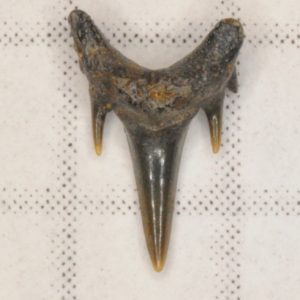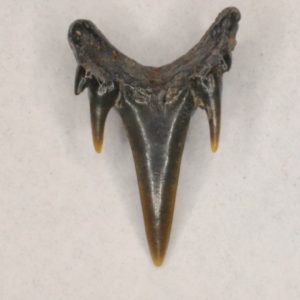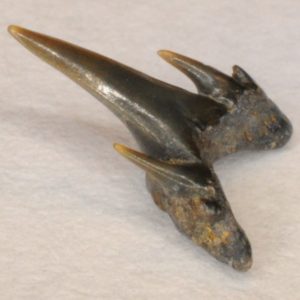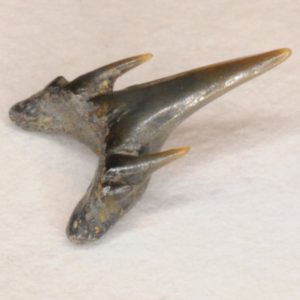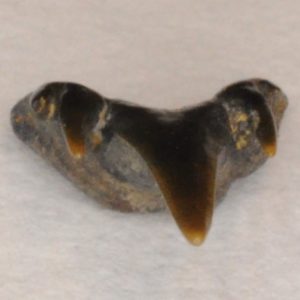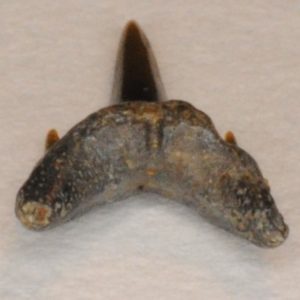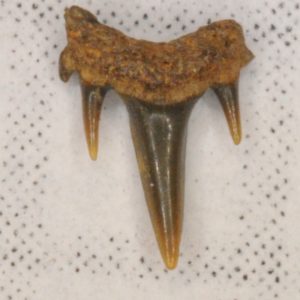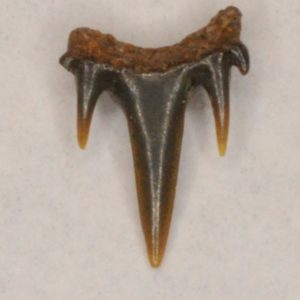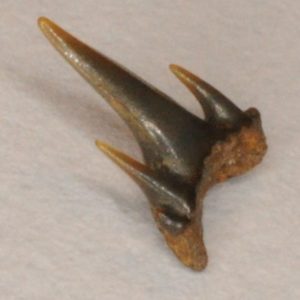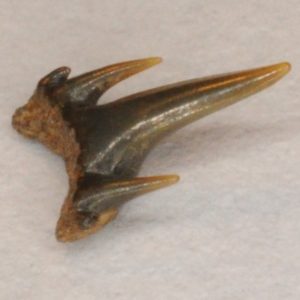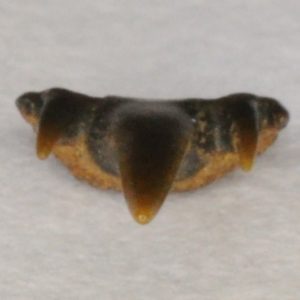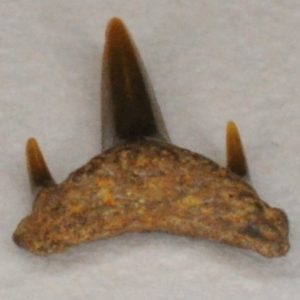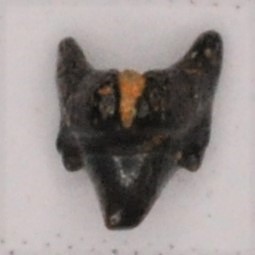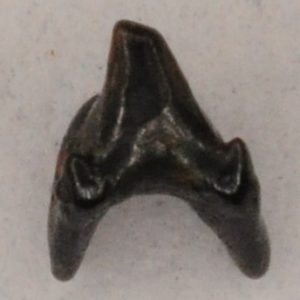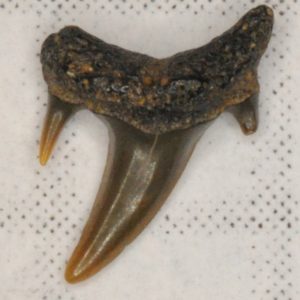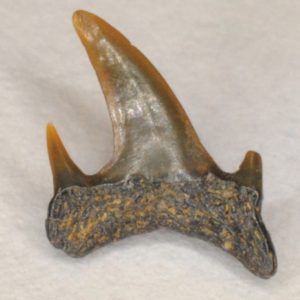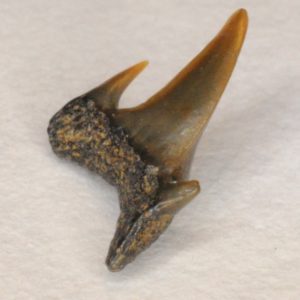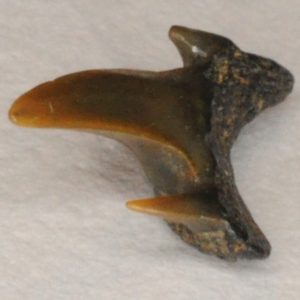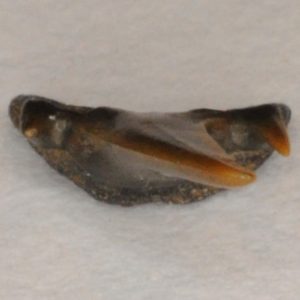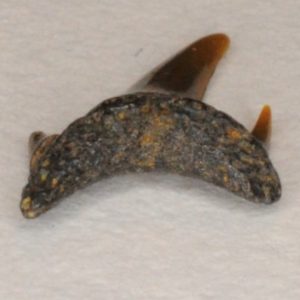NJfossils.com
"Fossils aren't a hobby, they're a lifestyle."Sand tiger (Odontaspis aculeatus aka Hypotodus aculeatus)
Age – Late Cretaceous; Commonality – Uncommon; Size – average: ¼ inch, max: a little under ½ inch
These teeth are similar to Carcharias holmdelensis teeth. They are relatively thin and have two pairs of rather large cusplets when not broken. It is debated if these teeth are another species or are just juvenile Carcharias samhammeri teeth. I personally believe that they are a different species because of their much less robust nature.
Anterior Teeth
Anterior teeth are slender and usually have two pairs of cusplets on each side of the main cusp. The larger primary cusplets are half the length of the main cusp. The secondary cusplets are not that large and can sometimes look like little bumps (such as the mesial secondary cusplet on this tooth). This tooth is an upper anterior (likely an A1).
This anterior came from a similar position as the one above, but is significantly smaller. It possibly came from a smaller shark.
Intermediate Tooth
Intermediate O. aculeatus teeth are smaller than the anteriors and laterals and are about the same size as the symphyseals and posteriors. They are more symmetrical than the symphyseals and not as elongated. The posteriors have wider roots than the intermediates.
Lateral Tooth
This tooth is an upper lateral. Upper laterals are more distally curved. Lower laterals are erect like the anteriors, except they are shorter and more slender and symmetrical (on average).

